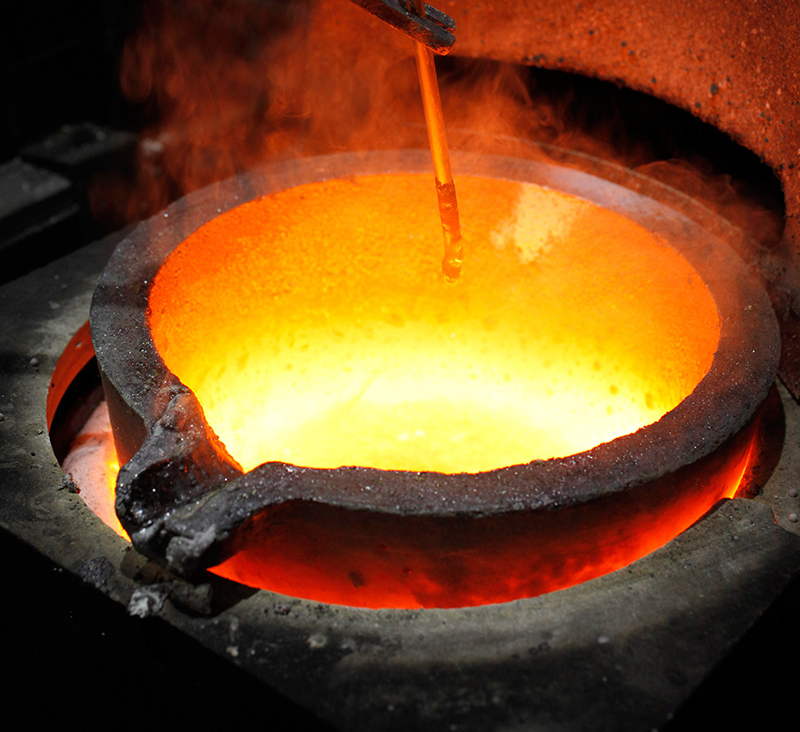Gold Refining
Once the gold ore is brought into the gold refinery, it is melted down to a liquid. This is also done with second hand gold. The gold ore and second hand gold has a lot of impurities that must be separated out. The second hand gold contains other metals like copper and zinc that are added to help with structure and strength and is reflected in the Karat of the gold (24K being the “most pure” and 14K being the typical “workable” ratio). The melting down of gold is shown in Figure 5.1(Melted Gold, 2015)
Aqua Regia
Once the gold is melted and cooled, A chemical process involving a mixture of nitric acid and hydrochloric acid being mixed with the gold is used to extract out any impurities. A big impurity that is separated out is silver, a valuable metal that is usually found with gold ore. This process is called Aqua Regia, Latin for “Kings Water”, and is very effective. The acid separates out the pure gold from the impurities and drastically reduces the overall mass of the impure gold added. This method is shown in figure 5.2(Aqua Regis, 2015)
Aqua Regia produces a lot of dangerous fumes and is a highly complex process. It was most famously used to hide the nobel peace prizes of German Physicists Max von Laue and James Franck from the Nazis. Once the war was over, the dissolved gold was recasted in the metals and presented back to Laue and Franck.
Once the process is complete, the acid is processed and the gold is removed from the acid and melted down to the next stage, Smelting
Smelting
The pure gold is then heated back up to moltant levels and poured into gold bars called ingots or into smaller quantities called bullion. An example of ingots are shown in Figure 5.3(Gold Bars, 2015)
The environmental impacts of smelting is that the process requires a lot of energy to melt and refine the gold. The large furnaces are usually powered by coal, which being a fossil fuel, releases excess carbon into the atmosphere and leads to increased greenhouse gases. A way to reduces the pollution is to use clean fuel sources, but until we find an efficient source to power the equipment, coal will have to be the energy source.
The ingots and bullion are pure (24K) gold and are sold to exchanges in the next step of the commodity chain.
Sources:
Renner, H., Schlamp, G., Hollmann, D., Lüschow, H., Tews, P., & Rothaut, J. et al. (2000). Gold, Gold Alloys, and Gold Compounds. Ullmann’s Encyclopedia Of Industrial Chemistry. http://dx.doi.org/10.1002/14356007.a12_499
Maney Online – Maney Publishing. (2015). Interdisciplinary Science Reviews. Retrieved from http://www.maneyonline.com/doi/abs/10.1179/030801892789816145



are you buying diamond but not finish product